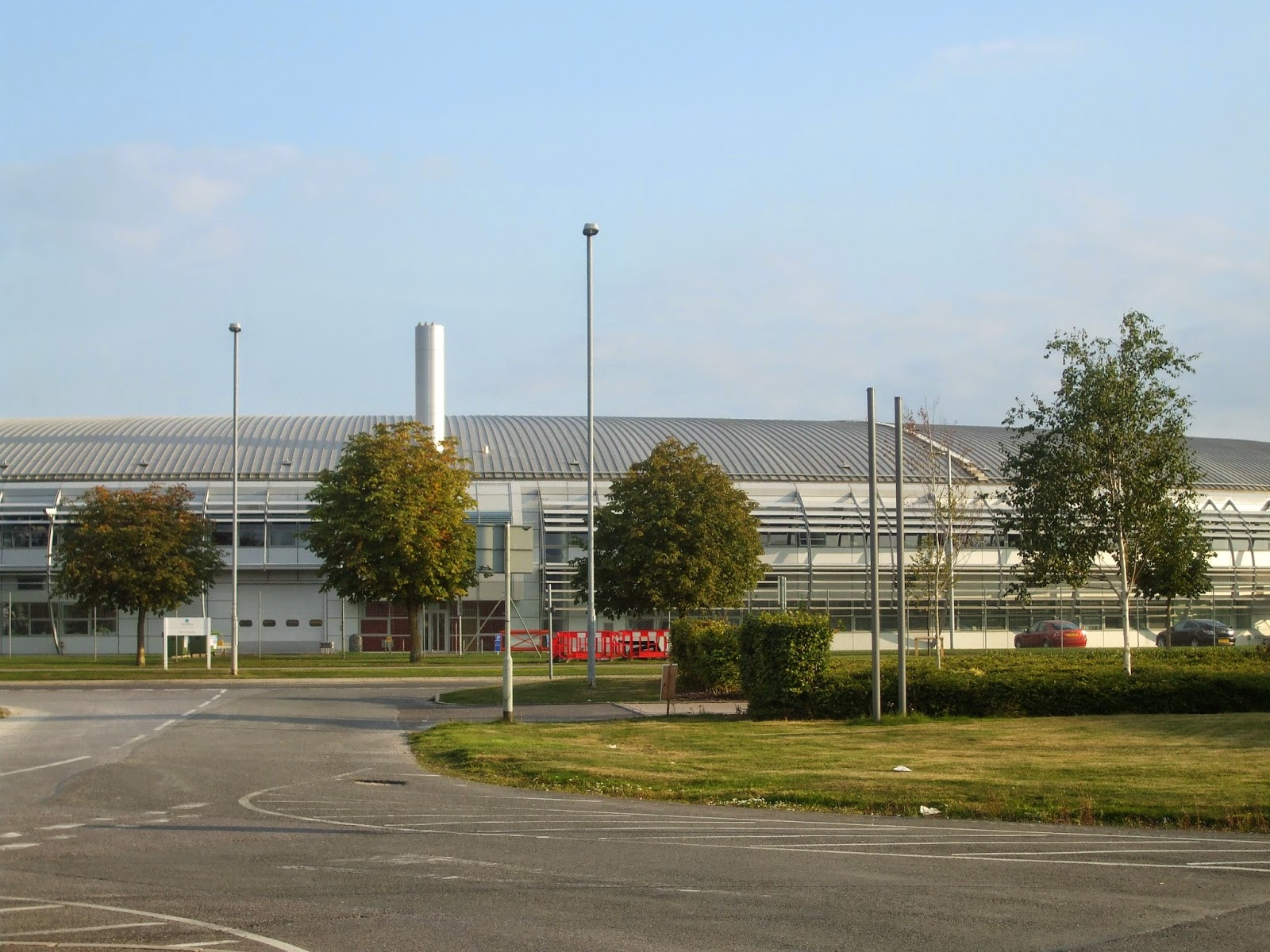Hello,
I do not apologise for the length of this post as it matches this weekend. Working at Diamond is never monotonous.
 |
A model of the inside of JET, the torus tokamak. The plasma is held within the kidney
shaped areas by magnets... and superconductors play their role! |
On
Thursday morning, I came back to stuffing quartz wool and YBCO salts into open capillaries. By the end, I had manged to fill and mount one,
which I felt was quite an achievement. The afternoon, however, I was off to Culham Centre for Fusion Energy.
There, they have the world's largest tokamak. With it, they are able to create a plasma out of heavier isotopes of hydrogen
(a hydrogen atom with extra neutrons). With it, they are hoping to help find a clean and abundant power source for the future, along with the developing remote handling systems like MASCOT (
who looks so like Wall-e). If you want to know more, visit http://www.ccfe.ac.uk/
Friday, however, was back to the trains. Some more empty engine shells had arrived, so I spent my morning patching up wholes and trying them with the superconductors.
No joy... yet... The afternoon, I finished creating a spare gas cell capillary because...
Saturday was
BEAMTIME! That morning, we attached and aligned the gas cell and hooked it up to the oxygen flow for the gas to flow through. The experiment involved heating the capillary up using a hot air blower and watching for changes.
Leaving it there for several hours, however, didn't actually seem to do much, so we began loading normal capillary (hard as my salts had clumped a little) and
set up a low pressure gas experiment, pumping in oxygen. We watched it heat and began writing scripts for overnight dwelling... until the capillary disappeared. As it was getting late at this point, we left it to get some sleep so we were prepared for...
 |
The beamroom at night... not actually that different from day, except
for the peacefulness. |
More beamtime Sunday. This turned into a long day. Since the YBCO had to be loaded into really thin capillaries (it absorbs the radiation well), we put this on the back burner so to speak and moved onto another compound. This one, we were able fill into larger capillaries and
pump He through in the hope that it could capture some of it.
Slowly increasing the pressure, we hoped to see a change in the diffraction pattern.
 |
| My little engine, awaiting the judgement by nitrogen. |
Whilst analysing these results, we repeated the experiment, but using Oxygen, to try to show whether the He had changed the crystal more than the beam did. To further our evidence, we followed this up with a different compound which shouldn't react with the He at all. With so many experiments and so much capillary heating, we eventually left the beamline
at 1.30AM! Diamond at night is so quiet!
Monday morning, (and I do mean 9am-no liein) we came down to our results... only to find the computer script had failed to take the scans! Sad times, but I was able to manually perform the experiment and follow it up with a repetition of the He experiments in the hope of clearer results.
I'm now able to mount the samples, lockup the beam room and set scans going.
The afternoon, though, was back to the train and my conclusion was superglue can't cope with liquid nitrogen... oh well. Needless to say, there were many leaks. And 3 broken magnets.
Oops.
So to
Tuesday, the order of the day was glues. I created
samplers of glues and left them to dry over lunch so later in the afternoon I could try them in the liquid nitrogen. They seemed to work so tomorrow,
my train is about to get coated!
Type soon!
PS. It wasn't all work. I've learnt 2 new board games and eaten many biscuits
whilst waiting for things to heat and pattern emerge.


















